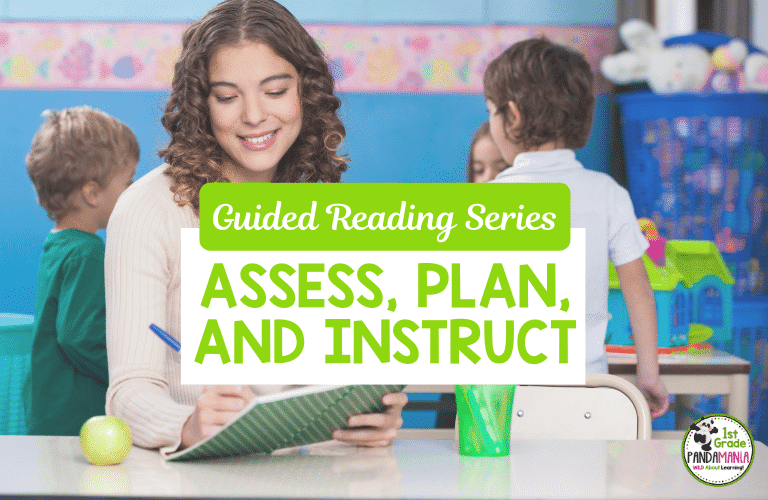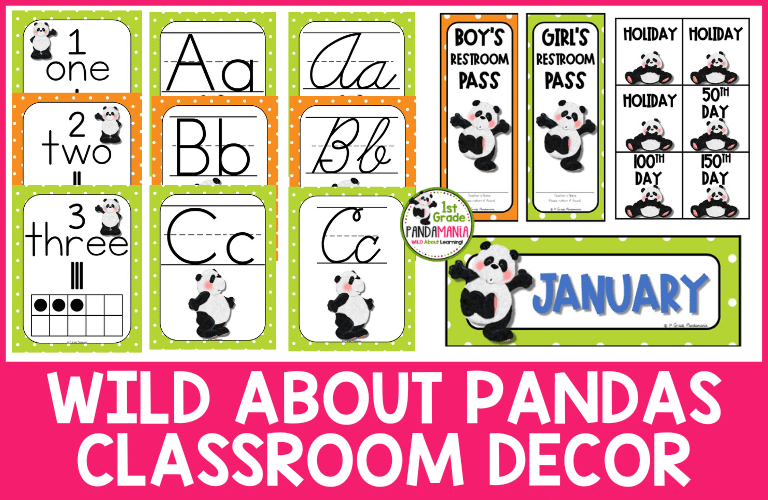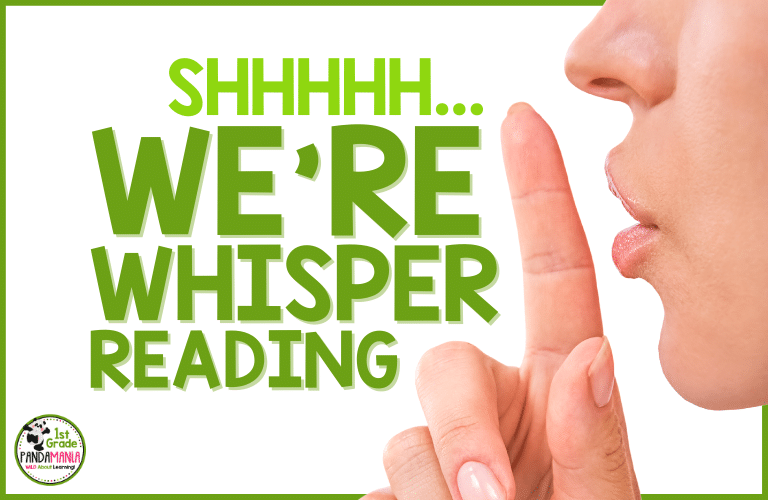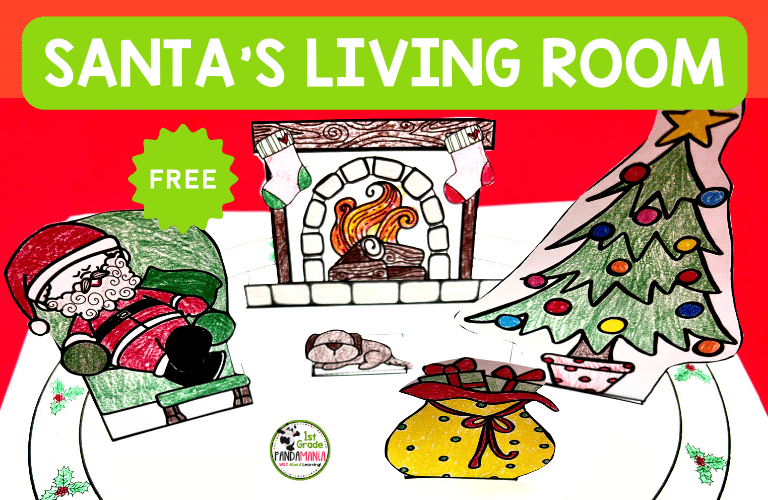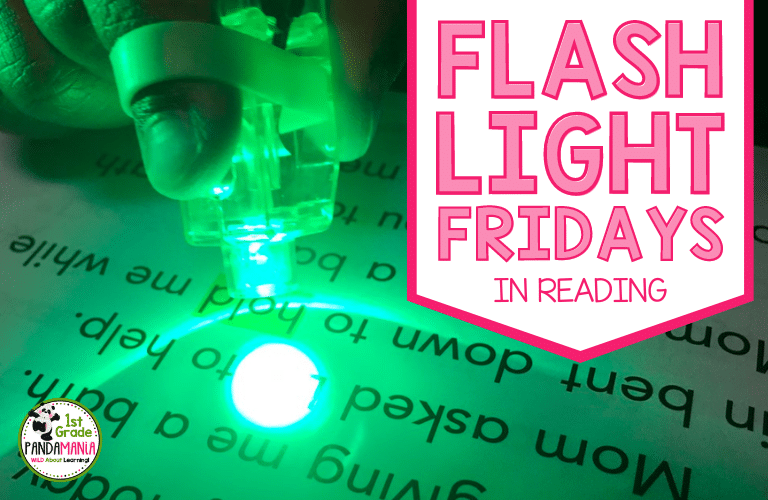Step 3 to Guided Reading Lessons: How to INSTRUCT
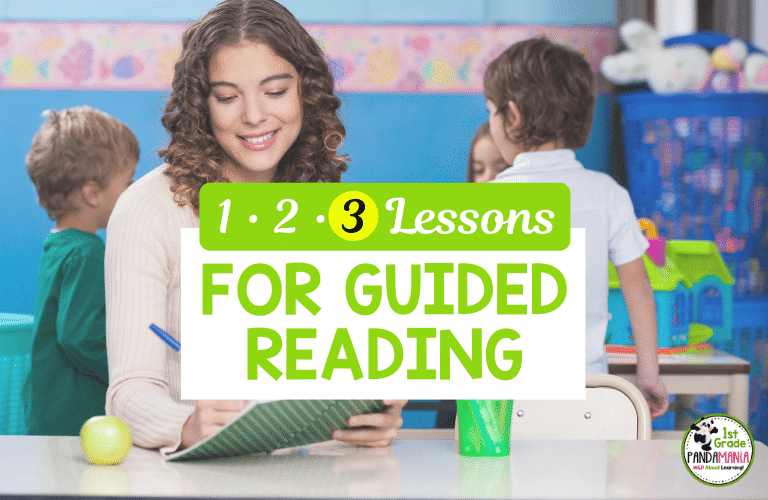
In the original post, Guided Reading Lessons in 1-2-3, I mentioned there are 3 parts to designing effective guided reading lessons.
The process I used is quite simple:
I know. It’s not a big secret method. It’s what many of us already do. But in order for our guided reading lessons to be effective, each of the 3 steps must be intentionally completed.
Intentionally: Purposefully, deliberately, with intention, knowingly, meaningfully
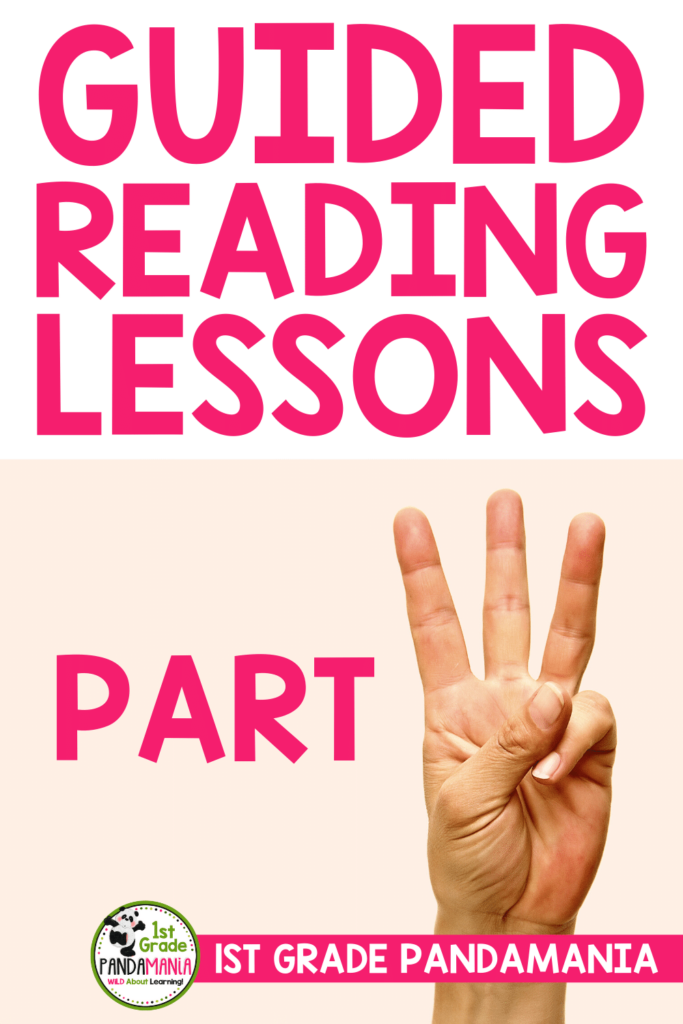
This blog post will focus on #3: Instruction
Prep for Instruction:
You might consider getting instruction materials for the planning part of guided reading, but I added it here since it is KEY to running guided reading groups smoothly. Need more information about preparing guided reading lessons? Read more here!
Once you have your plans in place, you are ready to gather materials for instruction.
Here’s a snapshot of a Targeted Guided Reading Plan for a group needing remediation with phonemic awareness, blending, and sight word skills. Notice that the materials needed are listed in parentheses. You will thank yourself later when you include those in your plans.

All you need to do is grab those materials and put them in a bin along with your plans for that group. Then it’s just grab and go when it’s time to instruct!
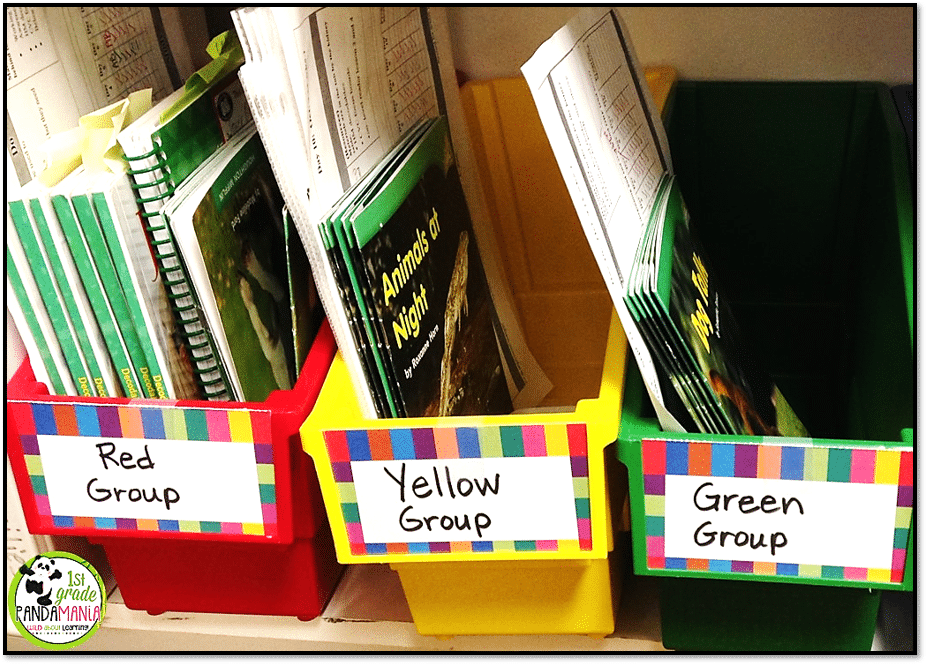
I like to keep it real. I was organized and tidy most of the time, but I didn’t do flashy. There’s nothing wrong with flashy, but you have to do what works for you and your students and stay focused on being intentional with your setup. These were on the bottom of a bookshelf within reach of my guided reading chair. I literally grabbed the bin as I called the group to the table.
BAM! I was ready with my plans and materials.
Here’s what teachers like you are saying about Targeted Guided Reading Plan and Resources:
“This resource is AMAZING! This has helped me so much to plan guided reading and assess students where there is a disconnect and I can’t quite put my finger on what they are missing. This is fabulous, thank you!”
Julia B.
“This is probably the BEST reading TPT purchase I have ever made. This has totally restructured the way I think about guided reading in a very positive way. ”
The Primary Pirate
Dos and Don’ts:
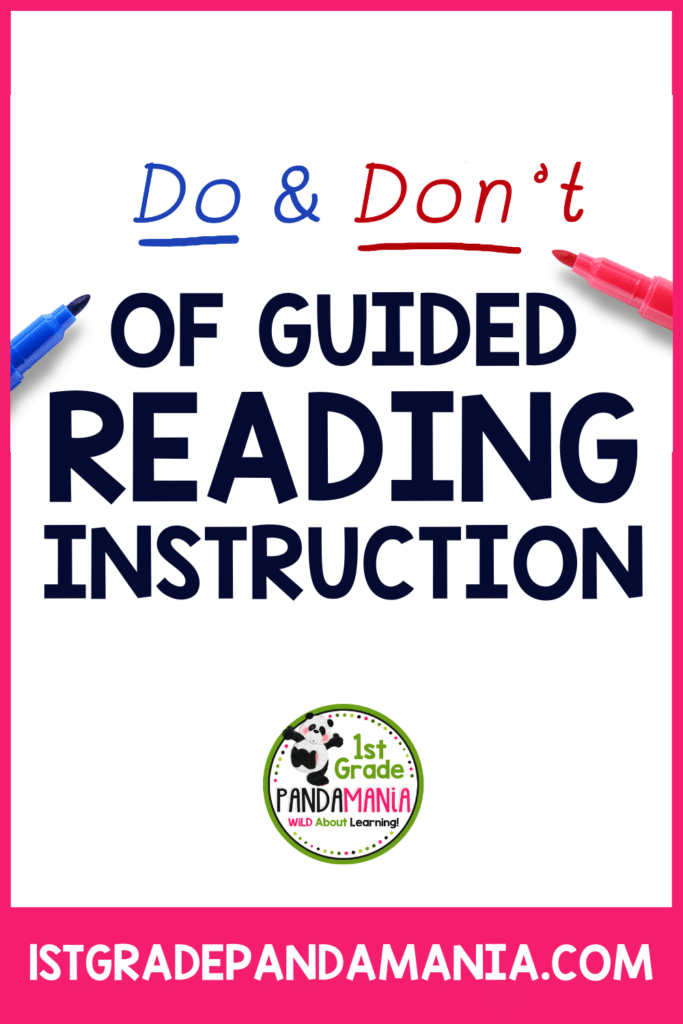
- As I’ve mentioned, I believe it’s important to be intentional with your guided reading instruction and to keep it as a time for guided practice and instruction. In other words, since I only have about 15 minutes with each group, I won’t spend it playing a game with them. They can do that at a center. I reserve that precious amount of guided reading time for targeted instruction for that group. I guide them with phonemic awareness, blending, fluency, comprehension, etc. Whatever is the target for that group.
- I believe it is essential to use every minute of your guided reading time wisely. You don’t want to be wasting precious time looking for materials. So as mentioned above, having everything ready to go is important. Time to practice drills? BAM! Grab and distribute the drills, and in seconds they are working. Time to read? BAM! Grab and distribute the books, and in seconds they are whisper reading page 1.
- It’s important to have a flow to your guided reading instruction. I found that when my students and I have a routine, we use those minutes much better! Plus, they know what to expect, and those anxious students are more at ease. Students know where to sit, how to sit, what usually comes first in our lessons, what to do with the drills I hand them, etc. You don’t want to have something different daily and have to take time to explain the new process. Keep it intentional, routine, engaging, and keep the flow.
- Keep the teacher talk to a minimum. Yes, you need to teach, but less is more when it comes to the teacher talk. You are guiding them to read, so let them do the work and guide them without too many interruptions and long instructions, and verbal lessons.
Try to:
- point to a missed word to indicate a mistake
- prompt students who pause before challenging words with one word: “sound” to remind them to sound it out
- prompt students who pause before sight words with “sight word” to remind them it is a word they need to know by sight
- listen to each student read several times with quiet prompts so you are not interrupting their flow
Be sure to search my blog for Guided Reading. You will find many additional posts that you may find helpful.

